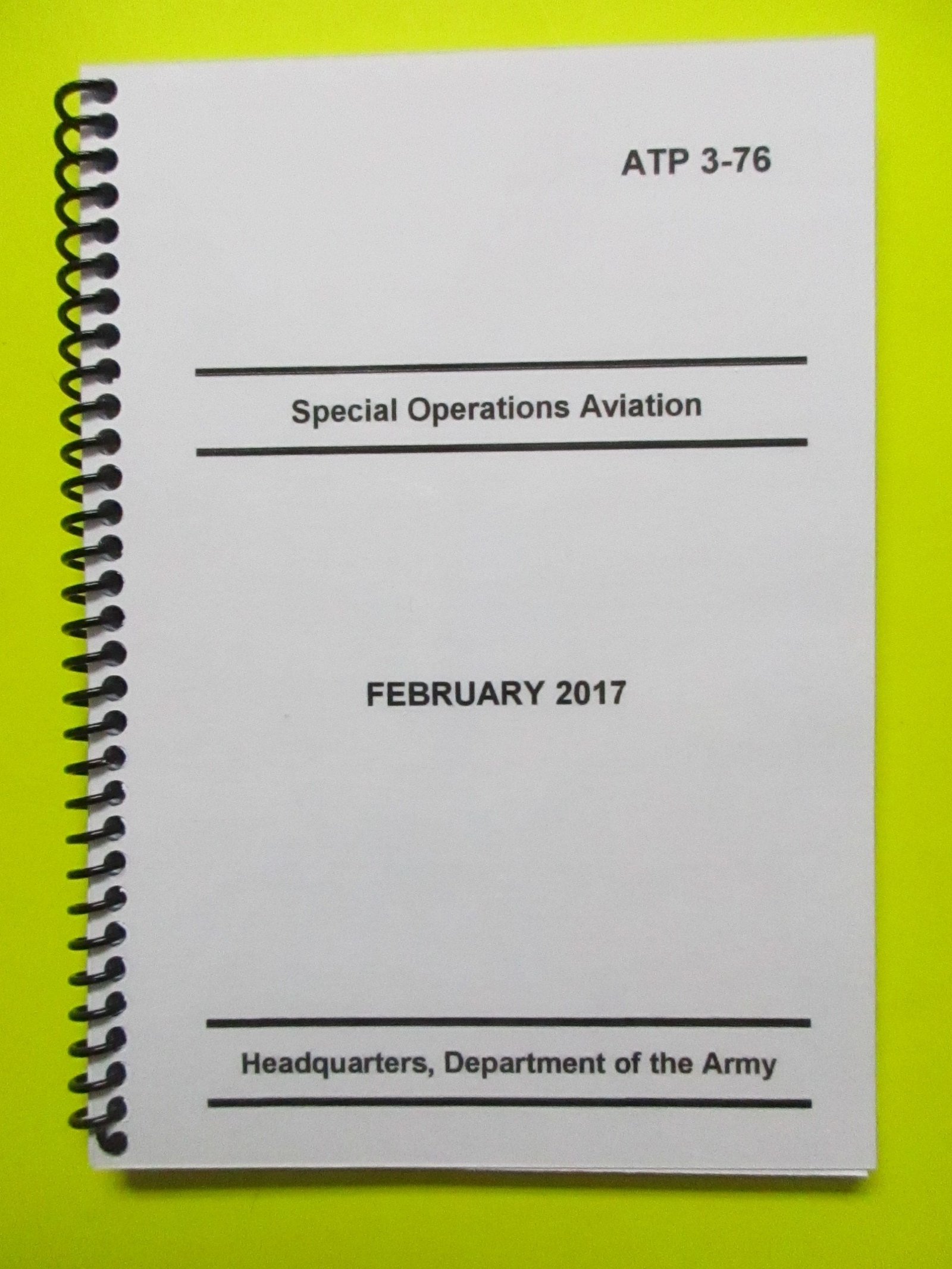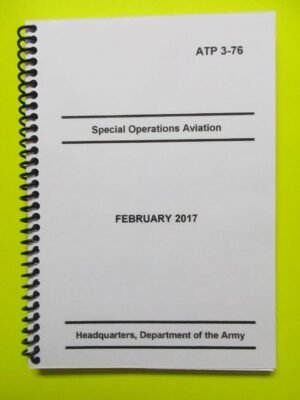Dated 10 Feb 2017
ATP 3-76 provides the U.S. Army commanders and staffs information on the structure and functions involved in Army special operations aviation activities.
The principal audience for ATP 3-76 is special operations forces (SOF), joint, and land component force commanders and staff. The publication provides a broad understanding of special operations aviation. This publication also provides guidance for commanders who determine the force structure, budget, training, materiel, operations, and sustainment requirements necessary to prepare special operations aviation to conduct their missions. This Service doctrine is consistent with joint doctrine.
ATP 3-76 applies to the Active Army, Army National Guard/Army National Guard of the United States, and United States Army Reserve unless otherwise stated.
Introduction
ATP 3-76 (formerly FM 3-76, Special Operations Aviation) was last published in 2011. This revision provides updates to Army special operations aviation fundamentals, support to special operations core activities, and capabilities involved in unified land operations. The publication provides doctrinal guidance on the organization and capabilities of Army special operations aviation and outlines the necessary requirements for conducting, planning, preparing, and executing special operations aviation missions. ATP 3-76 has seven chapters and two appendixes, which are summarized in the following paragraphs.
Chapter 1 provides an overview of the organization and functions of special operations aviation, including the Army Special Operations Aviation Command and the 160th Special Operations Aviation Regiment (Airborne). It describes the aviation regiment’s responsibilities in support of special operations core activities and the principles of special operations aviation employment throughout the range of military operations.
Chapter 2 discusses mission command, planning processes and considerations, aircraft considerations, and airspace deconfliction, control measures and liaison.
Chapter 3 provides information on special operations aviation operations, with a focus on force deployment, employment, and redeployment; environmental considerations; and other key operational considerations.
Chapter 4 discusses special operations aviation intelligence requirements, organization, and support. This chapter includes a discussion of intelligence preparation of the battlefield from an aviation perspective, and it concludes with a discussion of unmanned aircraft systems in use within Army special operations forces (ARSOF).
Chapter 5 provides a discussion of the communications requirements of Army special operations aviation. It includes information on the networking architecture of the 160th Special Operations Aviation Regiment, concept of employment, and unmanned aircraft system connectivity.
Chapter 6 provides a brief discussion of regimental fires, including coordination and planning, assets and techniques, and suppression of enemy air defenses (SEAD).
Chapter 7 discusses sustainment for the regiment, including planning, logistics support in both developed and undeveloped theaters, forward arming and refueling points, health system support, and funding. The chapter concludes with a discussion of contracting support.
Appendix A contains the formats of an operation order and a mission planning folder designed for special operations aviation aircrews.
Appendix B provides a list of all aircraft in the special operations aviation regiment inventory.
IN COLOR
This book is a “BIG” size (the size of a regular sheet of paper) – The binding is with coil, allowing easy flipping of pages without jamming.
If you desire a “mini” size, we have it on this web site too. It is a popular size to carry anywhere (briefcase, large pocket, purse) but the print is large enough for easy reading.
The color covers are laminated for weather protection with black and white inside printing.





